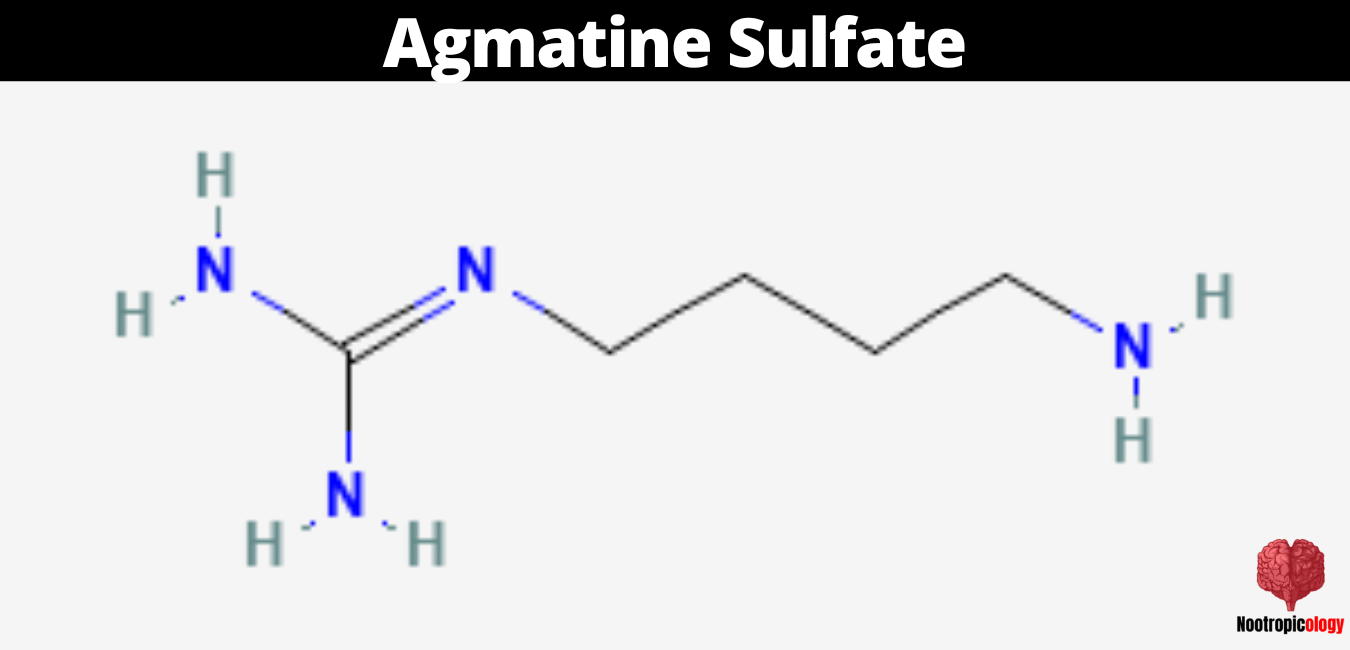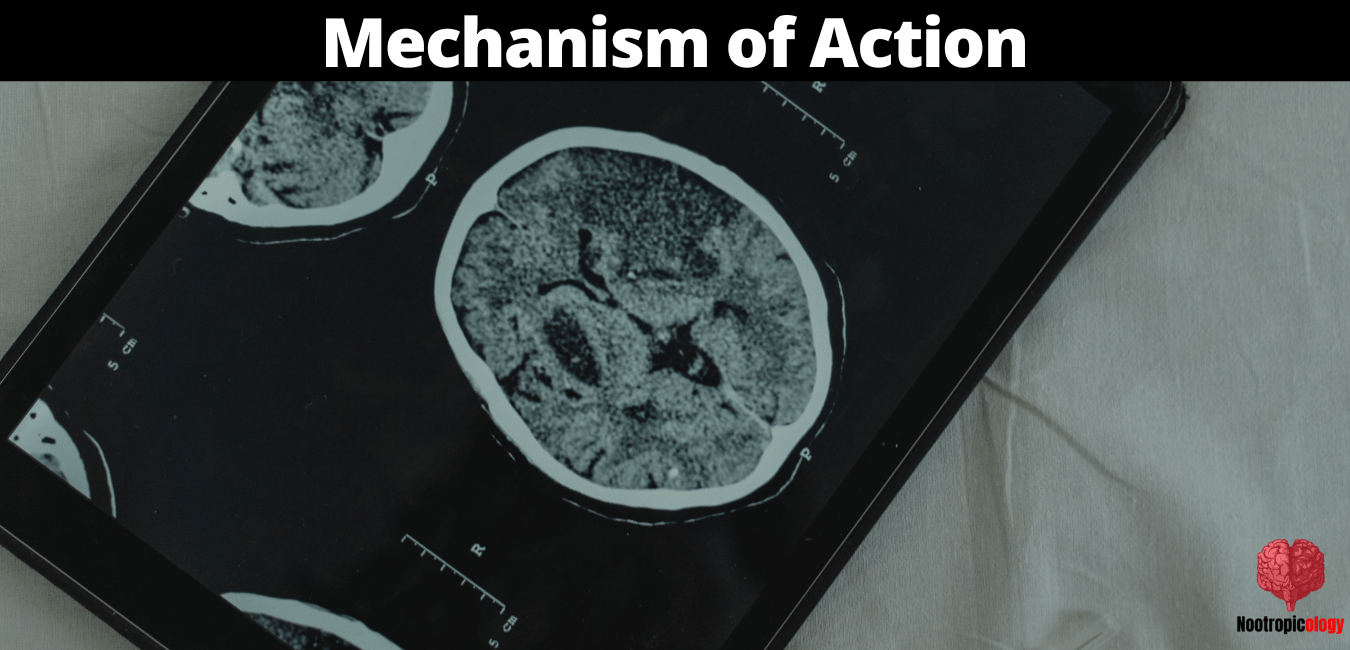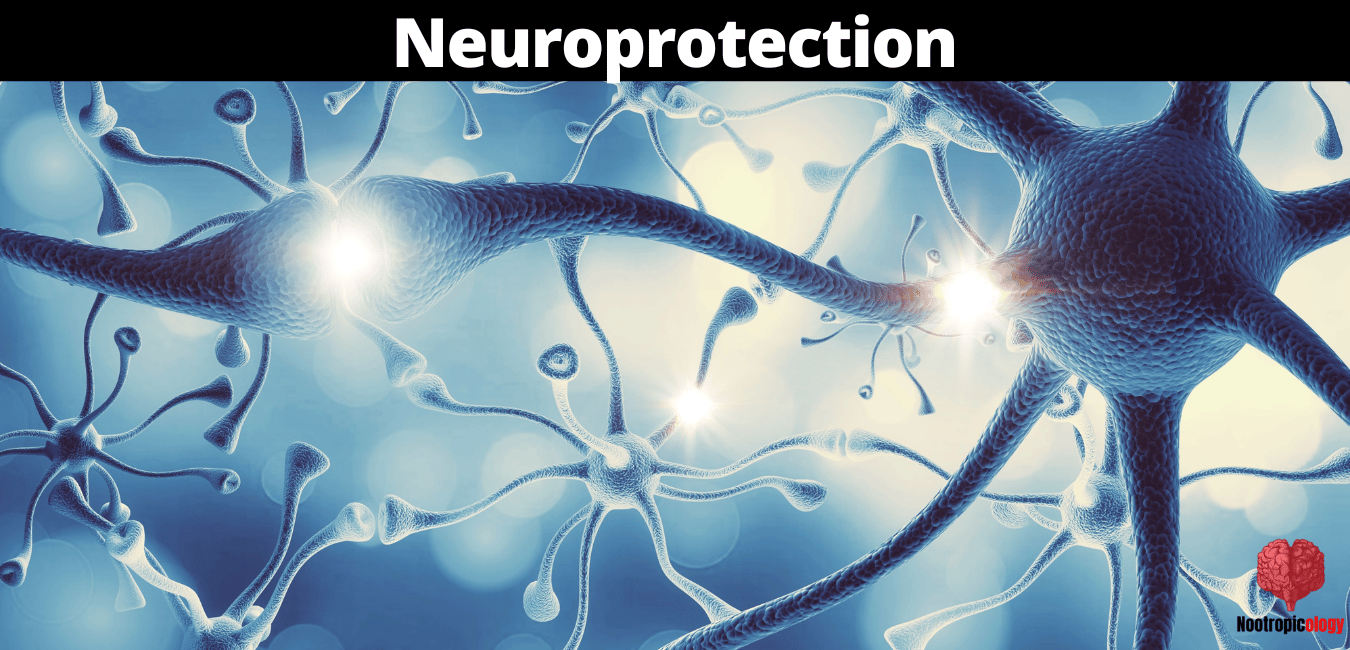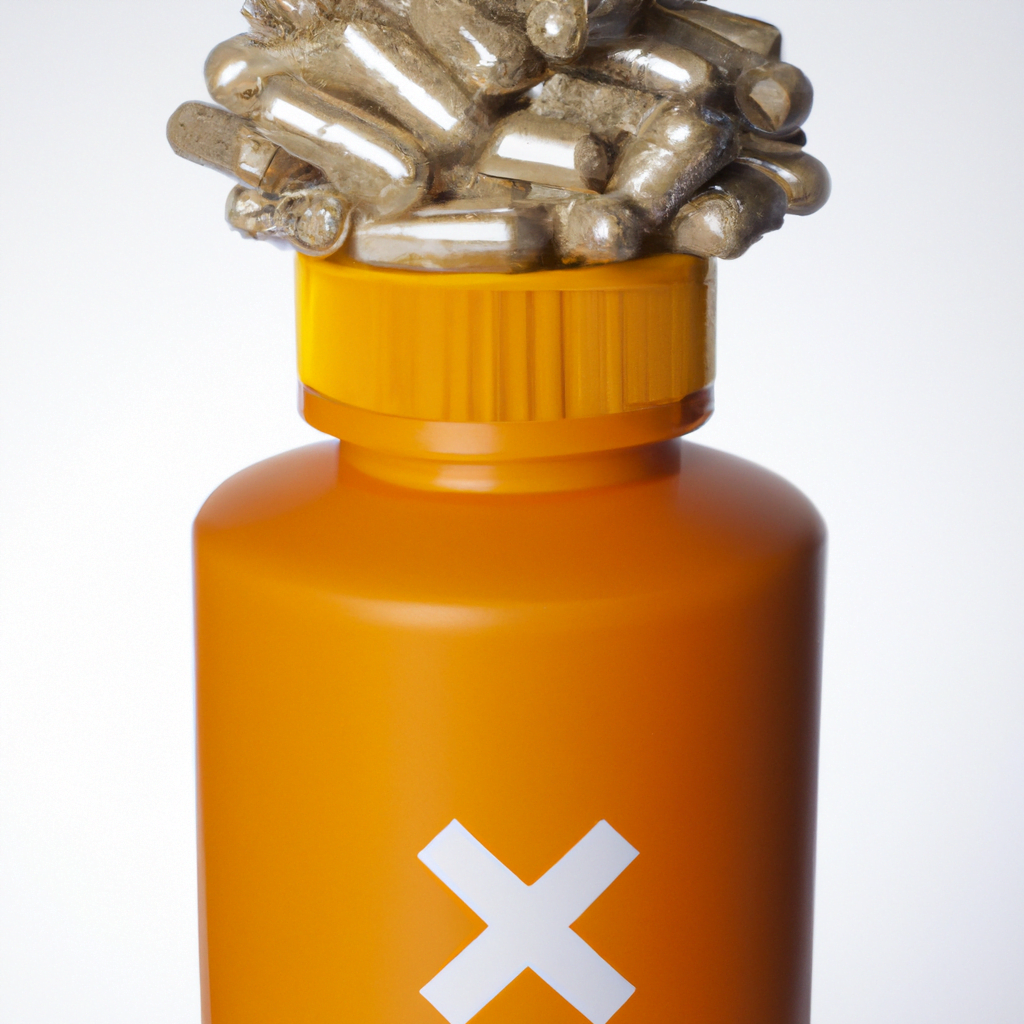
As a researcher and data scientist, my career has been deeply entrenched in the intricate labyrinth of nootropics.
My passion and scholarly pursuits have been aimed at investigating novel compounds that carry the potential to augment cognitive function.
One such compound that has recently piqued my curiosity and academic interest is Agmatine Sulfate.
This molecule, with its unique properties and promising potential as a nootropic, calls for an in-depth scientific exploration and analysis.
So today, let's take a deep dive into its mechanism of action, nootropic benefits, and much more.
Agmatine Sulfate: An Introduction to a Potent Nootropic

Agmatine Sulfate (4-aminobutyl-guanidine), a naturally occurring metabolite of the essential amino acid L-arginine, has emerged as a potent nootropic in the realm of cognitive enhancement.
Agmatine was first discovered by Albrecht Kossel in 1910, but its potential as a cognitive enhancer was not studied until the 1990s.
The term nootropic, coined by psychologist and chemist Dr. Corneliu E. Giurgea in 1972, refers to substances that can improve cognitive functions, such as memory, creativity, or motivation, in healthy individuals. In the ever-growing field of nootropics, Agmatine Sulfate distinguishes itself through its unique mechanisms of action and a broad spectrum of potential benefits.
The compound is primarily synthesized in the human brain and is stored in neurons, ready to be released when neuronal activity is high. Once released, Agmatine Sulfate interacts with several molecular targets, including neurotransmitter systems, ion channels, and nitric oxide (NO) synthesis.[1]
These interactions contribute to its neuroprotective and neuroregulatory roles and underpin its potential as a cognitive enhancer. Agmatine Sulfate's cognitive-enhancing effects are believed to stem from its ability to modulate the glutamatergic and the monoaminergic systems, both of which are crucial for cognitive functions such as learning and memory.
For instance, as an antagonist of the N-methyl-D-aspartate (NMDA) receptor, a subtype of glutamate receptor, Agmatine Sulfate can regulate glutamatergic neurotransmission, which plays a vital role in synaptic plasticity, a cellular correlate for learning and memory.[2]
Further, as an agonist of imidazoline receptors, Agmatine Sulfate can influence the monoaminergic system, which is involved in several cognitive processes, including attention and executive functions. Thus, these dual actions allow Agmatine Sulfate to potentially enhance various cognitive domains, making i0t a versatile and potent nootropic.
In addition to these cognitive benefits, Agmatine Sulfate has been associated with several other health benefits, including neuroprotection, pain reduction, and mood improvement, further broadening its appeal as a nootropic.
However, while the preliminary findings on Agmatine Sulfate are promising, more extensive, well-controlled human studies are needed to elucidate its efficacy and safety as a cognitive enhancer fully.
Regardless, the current evidence points to Agmatine Sulfate as a promising agent in the nootropic arsenal, offering a fascinating avenue for those seeking to optimize their cognitive potential.
Agmatine Sulfate's Chemical Structure and Mechanism of Action

Agmatine Sulfate (C5H14N4) is a biogenic amine, synthesized in the brain through the decarboxylation of the amino acid L-arginine, a process mediated by the enzyme arginine decarboxylase.[3]
Structurally, Agmatine Sulfate is a polycation at physiological pH, possessing four potential hydrogen acceptor groups and three potential hydrogen donor groups, thereby enabling it to form multiple hydrogen bonds. This unique structure allows it to interact with various molecular targets, making it a versatile neuromodulator.
As mentioned earlier, one of the primary mechanisms through which Agmatine Sulfate exerts its nootropic effects involves modulating neurotransmitter systems, specifically, the glutamatergic and monoaminergic systems.
As an N-methyl-D-aspartate (NMDA) receptor antagonist, Agmatine Sulfate can modulate glutamatergic neurotransmission. The NMDA receptor, a subtype of glutamate receptor, plays a key role in synaptic plasticity, a process crucial for learning and memory.[4] By antagonizing these receptors, Agmatine Sulfate can help regulate the activity of glutamate, a neurotransmitter that, in excess, can cause neuronal damage.
In addition to its role in glutamatergic neurotransmission, Agmatine Sulfate also acts as an agonist of imidazoline receptors, thereby influencing the monoaminergic system.[5] Monoaminergic neurotransmitters, including dopamine, norepinephrine, and serotonin, are involved in various cognitive processes such as attention, mood regulation, and executive functions.
By interacting with imidazoline receptors, Agmatine Sulfate can influence the release and action of these monoaminergic neurotransmitters, potentially enhancing these cognitive functions.
Furthermore, Agmatine Sulfate can inhibit nitric oxide synthase enzymes, which control the production of nitric oxide (NO), a molecule involved in various physiological and pathological processes. Agmatine Sulfate may exert neuroprotective effects by regulating NO production, further contributing to its potential as a cognitive enhancer.[6]
It's worth noting that while our understanding of Agmatine Sulfate's mechanism of action has advanced significantly, further research is needed to fully elucidate the complex interplay between its unique chemical structure and the broad spectrum of effects in the brain.
Nevertheless, the existing evidence underscores the potential of Agmatine Sulfate as a potent nootropic with diverse mechanisms of action.
Agmatine Sulfate's Chemical Composition
Agmatine Sulfate, or (4-aminobutyl)guanidine sulfate, is a derivative of the amino acid L-arginine, one of the 20 standard amino acids that are used by cells to synthesize proteins.
Structurally, Agmatine is a polycationic molecule at physiological pH, containing two primary functional groups - the guanidinium and the primary amine groups. The guanidinium group, also found in arginine, imparts a positive charge to the molecule at physiological pH, enabling it to interact with various biological targets.
The primary amine group, meanwhile, serves as a site for reactions, such as acetylation and methylation, which can modulate the molecule's activity.
When Agmatine is bound to sulfate ions, it forms Agmatine Sulfate, a stable form of the compound that can be readily absorbed by the body. The sulfate group in Agmatine Sulfate is an inorganic ion consisting of a sulfur atom surrounded by four oxygen atoms in a tetrahedral arrangement.
This group is not reactive and does not interact with biological targets. However, it aids in the stabilization and solubilization of Agmatine in the body, facilitating its delivery to the sites of action.
Therefore, the chemical composition of Agmatine Sulfate makes it a unique and versatile molecule with a range of potential biological interactions.
Its structure allows it to bind with multiple molecular targets, potentially modulating various physiological processes, including neurotransmission and nitric oxide production, thus contributing to its cognitive-enhancing and neuroprotective effects.
Detailed Examination of Agmatine Sulfate's Mechanisms in the Brain
Agmatine Sulfate operates in the brain through a series of complex mechanisms, interacting with numerous molecular targets, including neurotransmitter systems, ion channels, and nitric oxide synthase enzymes.
These interactions underpin Agmatine Sulfate's potential as a cognitive enhancer and neuroprotective agent.
One of Agmatine Sulfate's primary actions in the brain involves modulating neurotransmitter systems. It's an antagonist of the N-methyl-D-aspartate (NMDA) receptors, a type of glutamate receptor.
Glutamate is the primary excitatory neurotransmitter in the brain and plays a critical role in synaptic plasticity, a cellular mechanism essential for learning and memory. By antagonizing NMDA receptors, Agmatine Sulfate modulates glutamatergic neurotransmission, thereby potentially enhancing cognitive functions.
Further, Agmatine Sulfate acts as an agonist of imidazoline receptors, which are distributed widely in the central nervous system and influence various physiological functions. This interaction can affect the monoaminergic system, which comprises neurotransmitters like dopamine, norepinephrine, and serotonin.
These monoamines are involved in several cognitive processes, such as attention, motivation, and executive functions. Thus, through its activity at imidazoline receptors, Agmatine Sulfate can potentially optimize these cognitive functions.
In addition to neurotransmitter modulation, Agmatine Sulfate also impacts nitric oxide (NO) synthesis by inhibiting nitric oxide synthase enzymes. NO is a versatile molecule involved in various physiological processes, including neural communication, immune response, and vasodilation.
However, excessive NO production can lead to neuronal damage. By inhibiting nitric oxide synthase enzymes, Agmatine Sulfate can regulate NO production, potentially offering neuroprotective effects.
Moreover, Agmatine Sulfate has been found to modulate the function of α2-adrenergic receptors and certain subtypes of serotonin receptors, further expanding its scope of action within the brain.[7]
Review of Research on Agmatine Sulfate’s Cognitive Benefits
Over the past few years, scientific research has begun to uncover the potential cognitive benefits of Agmatine Sulfate. While many of these studies have been conducted on animal models, they provide critical insights into the possible effects of this compound on human cognition.
Elevated Agmatine Levels in the Rat Brain: Study Overview and Implications
The study "Spatial learning results in elevated agmatine levels in the rat brain" by Ping Liu and colleagues,[8] provides compelling evidence for the involvement of agmatine in learning and memory processes. This research supports the notion of agmatine as a novel neurotransmitter and its potential role in cognitive enhancement.
In this study, rats were subjected to a water maze task, a widely accepted method for assessing spatial learning and memory. The task requires animals to locate a hidden platform in a water-filled pool, and the ability of the rats to find this platform over time indicates their learning and memory capacities.
Agmatine levels in various regions of the rat brain - specifically, the hippocampus, parahippocampal region, cerebellum, and vestibular nucleus - were measured after the task. The researchers used liquid chromatography/mass spectrometry, a highly accurate technique for detecting and quantifying chemicals in biological samples.
The results were significant: compared with rats that only swam or were kept in a holding box, the water maze-trained rats showed significantly increased agmatine levels. These elevations were specifically observed in the CA1 and dentate gyrus subregions of the hippocampus, the entorhinal cortex, and the vestibular nucleus. All these brain regions are known to be involved in learning and memory processes.
The hippocampus, in particular, is central to forming new memories, and the entorhinal cortex plays a critical role in spatial memory. The specific increase in agmatine levels in these areas suggests that this compound may play an active role in these cognitive functions.
This study, for the first time, demonstrates a spatial learning-induced, region-specific elevation in agmatine, suggesting its involvement in learning and memory processes.
High Daily Dosage of Dietary Agmatine: A Case Report: Study Overview and Implications
The study "Long-term (5 years), high daily dosage of dietary agmatine--evidence of safety: a case report" by Gad M Gilad and Varda H Gilad,[9] aims to address the paucity of information regarding the long-term safety of oral agmatine supplementation. Their investigation provides vital insights into the potential of agmatine, decarboxylated arginine, as a safe and effective nutraceutical.
The authors of the study took a unique approach to assess long-term safety: they evaluated their health status during continuous consumption of a high daily dosage of oral agmatine over a period of 4-5 years. This involved a daily dose of 2.67 g agmatine sulfate, encapsulated in gelatin capsules, taken twice a day, morning and evening, after meals. The regimen consisted of six capsules daily, each containing 445 mg of agmatine sulfate.
Their health status was monitored through periodic physical examinations and laboratory blood and urine analyses. Over the course of the study, all measurements remained within normal values, and the authors reported sustaining good general health throughout the study period, up to 5 years.
This study is particularly significant as it is the first to demonstrate that the recommended high dosage of agmatine can be consumed safely for at least 5 years without evidence of any adverse effects.
This is an important finding, as it supports the long-term safety of high-dose dietary agmatine, a key factor in its potential utility as a nutraceutical. However, this being a case study, it represents the experience of the authors alone.
Therefore, further studies, especially randomized controlled trials with larger sample sizes, are needed to corroborate these findings and fully establish the long-term safety profile of agmatine sulfate.
Agmatine, a Potential Novel Therapeutic Strategy for Depression: Study Overview and Implications
The study "Agmatine, a potential novel therapeutic strategy for depression" by Andiara E Freitas, Vivian B Neis, and Ana Lúcia S Rodrigues,[10] tackles the prevalent issue of major depressive disorder (MDD), a psychiatric condition affecting up to 20% of the global population.
The authors argue that despite the existence of various safe and effective antidepressant drugs, these options are not ideal due to their significant side effects and the prolonged periods required for clinical benefits to manifest.
Against this backdrop, the researchers focus on agmatine, an endogenous polyamine synthesized in the brain through the decarboxylation of arginine. Agmatine has been shown to modulate several receptors and is considered a neuromodulator in the brain.
In this review, the authors discuss studies showcasing the antidepressant effects of agmatine, as well as the associated mechanisms of action. They highlight the potential of agmatine to be a novel antidepressant drug, particularly due to its ability to interact with various neurotransmitter systems, including the monoaminergic system, which is closely linked to mood regulation.
Additionally, the authors also point out the potential beneficial effects of agmatine in the treatment of other neurological disorders, which can extend its therapeutic application beyond depression.
Agmatine Sulfate and Neuroprotection

Agmatine sulfate has been found to possess neuroprotective properties, which suggests potential therapeutic applications for many neurological disorders.
In one study, researchers investigated the effects of agmatine in a mouse model of stroke and found that it reduced neuronal damage and improved functional outcomes.[11]
This study aimed to investigate the effects of agmatine on brain apoptosis, astrogliosis, and edema in rats with transient cerebral ischemia.
The results showed that agmatine treatment improved the recovery of motor and proprioceptive deficits and prevented brain infarction, gliosis, edema, apoptosis, and neurotoxicity during MCAO ischemic injury in rats.
These findings show that agmatine improves outcomes of transient cerebral ischemia in rats by reducing brain apoptosis, astrogliosis, and edema.
Analyzing the Safety and Side Effects of Agmatine Sulfate
As with any substance intended for human consumption, it is crucial to understand the safety profile and potential side effects of agmatine sulfate. These factors will determine its viability as a nootropic and potential therapeutic agent.
Research to date has generally shown agmatine sulfate to be safe for use in the short term. Clinical trials have reported minimal side effects, most of which are mild and transient. Typical side effects can include gastrointestinal discomfort, such as diarrhea, nausea, and vomiting. Some individuals may also experience a mild drop in blood pressure.
The study mentioned earlier (Gad M Gilad et al.), which involved the participants consuming a high daily dosage of 2.67g of agmatine sulfate for a period of 4-5 years, reported no adverse effects. This finding suggests that long-term usage of agmatine sulfate might be safe, although this was a single case study and may not apply to all individuals.
Despite the encouraging safety profile, certain contraindications exist for using agmatine sulfate. Individuals with kidney disease or ulcers should avoid agmatine, which may exacerbate these conditions.
Agmatine may also interact with certain medications, including those for high blood pressure, diabetes, and medications that affect the liver. Pregnant and breastfeeding women are also advised to avoid its use due to these populations' lack of safety data.
Agmatine Sulfate: Usage and Nootropic Dosage Guidelines
Determining the right dosage is crucial to using any supplement effectively and safely, and agmatine sulfate is no exception. As a potent nootropic and potential therapeutic agent, it's essential to understand how much agmatine sulfate to take, when to take it, and the best way to do so.
The recommended dosage of agmatine sulfate varies based on the intended use. A dose range of 500-2500 mg per day is commonly recommended for cognitive enhancement. This dosage can be split into multiple smaller doses throughout the day, as agmatine has a short half-life in the body.
Regarding usage, agmatine sulfate is typically taken orally in capsule or powder form. It can be taken with or without food, but some people find tolerating it easier when taken with meals.
It's also important to note that individual responses to agmatine sulfate can vary. Therefore, starting with a lower dose and gradually increasing it if needed is often recommended while carefully observing any potential side effects.
Agmatine Sulfate Bioavailability and Half-Life Based on Research Findings
Understanding the pharmacokinetics - how the body absorbs, distributes, metabolizes, and excretes a substance - is crucial in realizing the full therapeutic potential of agmatine. A study from 2005 provides key insights into agmatine's central nervous system (CNS) pharmacokinetic profile, particularly concerning its bioavailability and half-life.[12]
Following intrathecal (injection into the spinal canal) administration of agmatine, it was observed that agmatine concentrations in the spinal cord remained near maximum levels for several hours, with a half-life of approximately 12 hours. This prolonged half-life in the CNS suggests that agmatine is retained in the CNS for a significant duration once administered.
In contrast, agmatine's serum half-life was less than 10 minutes post-intrathecal injection, aligning with previous reports of systemically administered agmatine. Despite the high concentration of agmatine in the CNS, its initial concentration in the serum was only 10% of that in the CNS, indicating that agmatine may be rapidly metabolized or excreted from the systemic circulation.
The pharmacodynamic response to agmatine, specifically its effects on NMDA-nociceptive behavior and thermal hyperalgesia, was also examined. Interestingly, while agmatine effectively inhibited both behaviors, the duration of this inhibition was only 10 to 30 minutes - much shorter than would be expected, given its prolonged half-life in the CNS.
This discrepancy suggests the existence of an extracellular clearance process in the spinal cord that is yet to be defined, potentially involving active transport mechanisms or enzymatic degradation.
Frequently Asked Questions (FAQ)
Where Can I Buy Agmatine Sulfate Online
Agmatine Sulfate is available online through various nutritional supplement retailers. Some well-known platforms include Amazon, eBay, and iHerb. It's also available on the websites of specialized supplement manufacturers such as GNC or Vitacost.
How Long Does Agmatine Sulfate Stay In Your System?
After administration, Agmatine Sulfate is rapidly absorbed and distributed in the body, with a half-life of approximately 12 hours in the spinal cord. This suggests that agmatine could stay in the system for about 24 to 36 hours before it's fully cleared.
How Long Does Agmatine Sulfate Work For?
The duration of the effects of Agmatine Sulfate can vary depending on the individual and dosage. However, despite its longer half-life, the pharmacodynamic effects of Agmatine Sulfate, such as pain inhibition, have been found to last for about 10 to 30 minutes.
Does Agmatine Sulfate Increase GABA?
Agmatine Sulfate has been shown to interact with multiple neurotransmitter systems, including GABA. In some preclinical studies, it has been suggested that agmatine may increase GABAergic activity, contributing to its potential anxiolytic and antidepressant effects.
Does Agmatine Sulfate Affect Dopamine?
Yes, Agmatine Sulfate is known to interact with the dopaminergic system. It has been observed to modulate dopamine levels in the brain, which could potentially influence mood, motivation, and reward mechanisms. However, the exact impact and mechanisms need further investigation.
My Final Thoughts on Agmatine Sulfate: A Potent Nootropic Worth Consideration
As I conclude my exploration of Agmatine Sulfate, it's essential to take a moment to reflect on the significance of this potent nootropic in the realm of cognitive enhancement. Agmatine Sulfate, a decarboxylation product of the amino acid arginine, has shown promising potential in the field of neuroscience, most notably for its ability to modulate several key neurotransmitters and receptors in the brain.
The cognitive benefits of Agmatine Sulfate are supported by a body of research demonstrating its efficacy in enhancing memory formation and recall, learning capabilities, and even displaying antidepressant effects.
Regarding safety, Agmatine Sulfate appears to be well-tolerated, even at high dosages over extended periods, as reflected in multiple long-term studies. This, combined with its relatively minimal side effects, makes it a promising candidate for further research and potential therapeutic use.
Its impact on neurotransmitter modulation and NMDA receptor antagonism, coupled with its safety profile, makes it a compelling area of study in the quest for cognitive health and neurocognitive enhancement solutions.
- Morrissey, J J, and S Klahr. “Agmatine activation of nitric oxide synthase in endothelial cells.” Proceedings of the Association of American Physicians vol. 109,1 (1997): 51-7.
- Neis, Vivian Binder et al. “Agmatine enhances antidepressant potency of MK-801 and conventional antidepressants in mice.” Pharmacology, biochemistry, and behavior vol. 130 (2015): 9-14. doi:10.1016/j.pbb.2014.12.009
- Taksande, B G et al. “Agmatine in the hypothalamic paraventricular nucleus stimulates feeding in rats: involvement of neuropeptide Y.” British journal of pharmacology vol. 164,2b (2011): 704-18. doi:10.1111/j.1476-5381.2011.01484.x
- Newcomer, J W et al. “NMDA receptor function, memory, and brain aging.” Dialogues in clinical neuroscience vol. 2,3 (2000): 219-32. doi:10.31887/DCNS.2000.2.3/jnewcomer
- Raasch, Walter et al. “Agmatine, an endogenous ligand at imidazoline binding sites, does not antagonize the clonidine-mediated blood pressure reaction.” British journal of pharmacology vol. 135,3 (2002): 663-72. doi:10.1038/sj.bjp.0704513
- Bila, Ivanna et al. “Agmatine Prevents Oxidative-nitrative Stress in Blood Leukocytes Under Streptozotocin-induced Diabetes Mellitus.” Open life sciences vol. 14 299-310. 23 Jul. 2019, doi:10.1515/biol-2019-0033
- Weiss, Torsten et al. “Agmatine modulates spontaneous activity in neurons of the rat medial habenular complex-a relevant mechanism in the pathophysiology and treatment of depression?.” Translational psychiatry vol. 8,1 201. 24 Sep. 2018, doi:10.1038/s41398-018-0254-z
- Liu, Ping et al. “Spatial learning results in elevated agmatine levels in the rat brain.” Hippocampus vol. 18,11 (2008): 1094-8. doi:10.1002/hipo.20482
- Gilad, Gad M, and Varda H Gilad. “Long-term (5 years), high daily dosage of dietary agmatine--evidence of safety: a case report.” Journal of medicinal food vol. 17,11 (2014): 1256-9. doi:10.1089/jmf.2014.0026
- Freitas, Andiara E et al. “Agmatine, a potential novel therapeutic strategy for depression.” European neuropsychopharmacology : the journal of the European College of Neuropsychopharmacology vol. 26,12 (2016): 1885-1899. doi:10.1016/j.euroneuro.2016.10.013
- Wang, Che-Chuan et al. “Beneficial effect of agmatine on brain apoptosis, astrogliosis, and edema after rat transient cerebral ischemia.” BMC pharmacology vol. 10 11. 6 Sep. 2010, doi:10.1186/1471-2210-10-11
- Roberts, John C et al. “Pharmacodynamic and pharmacokinetic studies of agmatine after spinal administration in the mouse.” The Journal of pharmacology and experimental therapeutics vol. 314,3 (2005): 1226-33. doi:10.1124/jpet.105.086173
source https://nootropicology.com/agmatine/

No comments:
Post a Comment